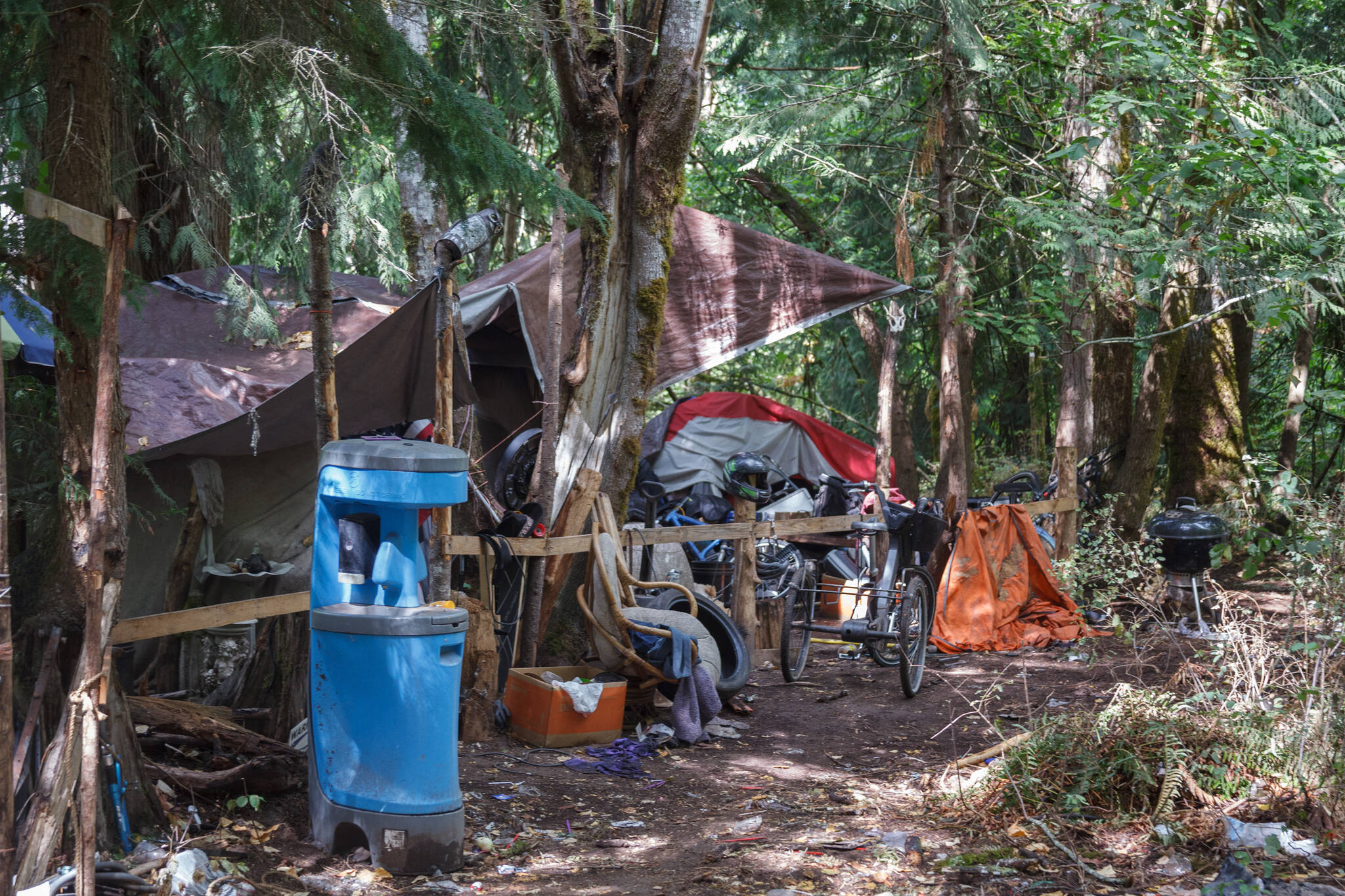OLYMPIA — Gov. Jay Inslee on Dec. 14 unveiled a two-year state budget plan that would put more money toward expanding behavioral health services and reducing homelessness, while cashing in on the first proceeds of a new carbon pricing scheme.
And on top of the spending blueprint, he is proposing a $4 billion bond measure for next year’s ballot that, if approved by voters, would provide money to catalyze the building of thousands of new affordable housing units in the next six years.
“Homelessness is a housing crisis. We cannot fix homelessness if we don’t build more housing,” Inslee told reporters.
The governor’s budget lays out $70.4 billion in spending in the 2023-25 operating budget with $2.65 billion in reserves.
It contains no new taxes. Some residents with lower incomes could get a little money back from the state as 2023 marks the first year that sales tax refunds are paid out through the Working Families Tax Credit program.
In the behavioral health arena, there are a number of investments, including nearly $300 million of state and federal dollars for increasing capacity in non-state operated facilities such as evaluation and treatment centers and behavioral health units in community hospitals. Some of the funds would pay for an increase in the day rate for psychiatric beds and a new acuity-based rate increase to reflect a higher payment for harder-to-place patients.
His plan counts on $1.7 billion in revenues from the auction of carbon emission allowances through the state’s new cap-and-trade program in the Climate Commitment Act. Auctions will be held quarterly starting in February. Money will be funneled into programs in the operating ($373 million), capital ($525 million) and transportation ($821 million) budgets.
The proposal steers an additional $2 billion into public schools. Almost half is for compensation — $600 million to cover statutorily required cost-of-living increases, plus an additional $350 million to recruit and retain educators. There are additional dollars for special education supports too.
State workers are getting raises of 4% on July 1, 2023 and 3% the following July. There’s also an opportunity for $1,000 bonuses for getting a COVID booster shot. State ferry workers are in line for 5% increases in each of the next two years as Washington State Ferries tries to fill its vacancies. Overall, there is $1.3 billion to cover higher compensation throughout the state workforce.
The lead Republican budget writer in the Senate said the proposal spends too much, and not on the right priorities.
“Even though the state economist has warned us about the risk of a recession, the governor wants to spend just about every tax dollar available,” Sen. Lynda Wilson, R-Vancouver, said in a statement. “It’s disappointing that he would increase state spending by 9.8% and still fail to invest in thoughtful answers to the things that concern Washington families most: the safety of our communities, the cost of living, and education issues that include K-12 learning loss.”
Also Wednesday, Inslee put forth a capital budget proposal in which the biggest ticket is a request for $900 million to tear down and build a new 350-bed forensic hospital at the Western State Hospital campus. Estimated costs of the project have ballooned from $677 million in 2021 to $900 million due to inflation and added design elements.
The $4 billion bond measure is likely to stir much interest — and debate.
Inslee said the money could spur the addition of 5,300 units in the initial biennium, and 19,000 in the ensuing three biennia.
As proposed, bond receipts would be used to provide emergency supportive housing for unsheltered people, such as those getting removed from encampments in state highway right of ways. It also would assist in building housing for people with special needs and units for workers earning less than 80% of the average median income. Proceeds also would be available to assist first-time homebuyers with down payment and closing costs.
The Legislature must put it on the ballot. It can do so with a simple majority vote in each chamber. If it makes the ballot, support from a simple majority of voters is required for passage.
Governors and lawmakers rarely go to the ballot with funding measures. This would be Inslee’s first try.
The last attempt came in 2010. Former state representative Hans Dunshee, a Snohomish Democrat, sponsored Referendum 52 to raise $500 million to support energy efficiency renovations at public schools, colleges and universities. The measure also would have prevented a sales tax on bottled water from expiring in 2013. Nearly 54% of voters rejected this measure.
The budget plan put forth by the three-term Democrative governor is the first of three spending proposals the public will see.
Majority Democrats in the House and Senate will each present their own budget plans during the 105-day legislative session that begins Jan. 9.
Talk to us
Please share your story tips by emailing editor@kentreporter.com.
To share your opinion for publication, submit a letter through our website https://www.kentreporter.com/submit-letter/. Include your name, address and daytime phone number. (We’ll only publish your name and hometown.) Please keep letters to 300 words or less.

